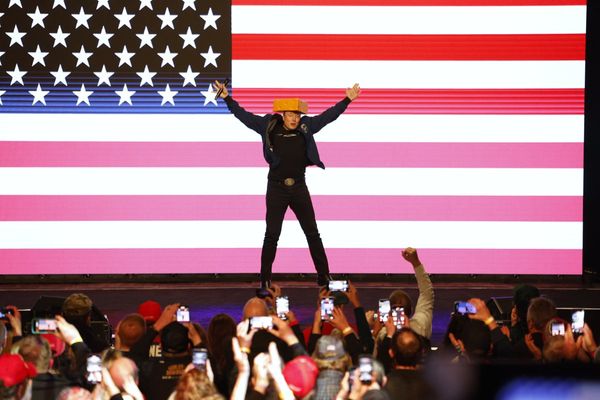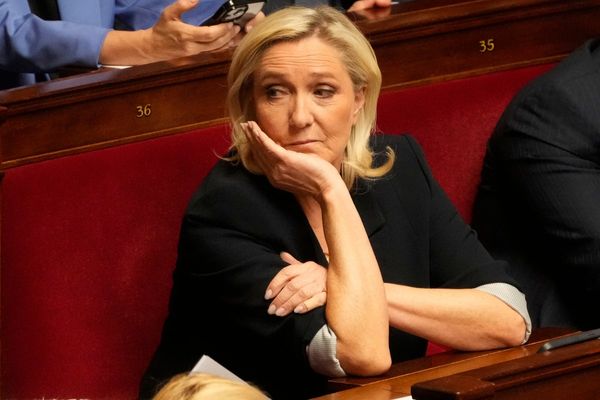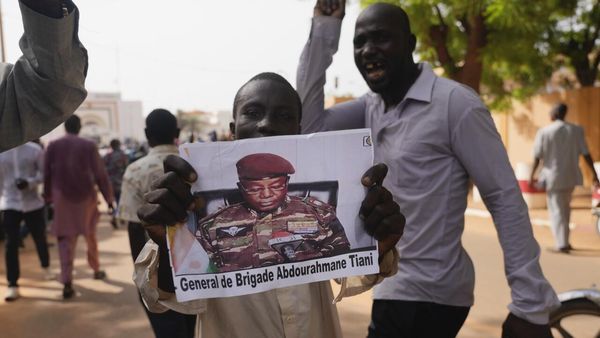
China has launched large-scale military drills around Taiwan, accusing its leaders of being “separatists” and “parasites” who were pushing the democratically run island into war.
The drills, accompanied by a propaganda campaign, were launched without warning on Tuesday morning. China’s People’s Liberation Army (PLA) said they were a “stern warning” to Taiwan’s democratically elected government over what Beijing claims is separatist activity.
“China’s reunification is an unstoppable trend - it will happen, and it must happen,” Guo Jiakun, a foreign ministry spokesperson, told a daily press conference on Tuesday afternoon.
Forces from the PLA Navy, Army and Rocket Force were approaching Taiwan from “multiple directions”, said China’s Eastern Theatre Command, which manages military operations in the region, on its official WeChat social media account.
It said the drills would focus on “combat readiness patrols at sea and in the air, seizing comprehensive control, striking maritime and land targets and imposing blockade controls on key areas and routes”.
The Command later said China’s Coast Guard was also involved, conducting what it called “law-enforcement patrols” close to Taiwan’s main island. A key element of China’s military advancement has been the integration of non-military arms, including the Coast Guard, and its maritime militia fleet of fishing boats, and the conversion or creation of civilian ships for military transport.
“These drills are concrete actions to exercise legitimate jurisdiction and control over the Island in accordance with the one-China principle,” said Zhu Anqing, a China Coast Guard spokesperson.
Taiwan’s defence ministry said it had detected 71 PLA aircraft and at least 19 Navy and Coast Guard vessels on Tuesday , including the Chinese aircraft carrier Shandong. More than 10 of the ships approached close to Taiwan’s contiguous zone, which stretches 24 nautical miles (44km) from the coast, military officials told Reuters. Taiwan’s military had deployed aircraft, Navy ships, and coastal missile systems in response, the ministry said.
Beijing claims Taiwan is Chinese territory and is building capability to seize it by military force. Analysts believe it is not there yet, but has been making significant advances and in the meantime uses military pressure – such as drills – and other coercive means to push Taiwan towards submission.
“‘Taiwan independence’ means war, and pursuing ‘Taiwan independence’ means pushing the people of Taiwan into a dangerous situation of war,” Zhu Fenglian, a spokesperson for Beijing’s Taiwan Affairs Office, claimed in a statement.
Taiwan, which is recognised as a country by around a dozen others mostly in the Pacific and Caribbean, operates as a sovereign state with its own democratically elected government, military and currency. Its government and people overwhelmingly oppose the prospect of Chinese rule.
Taiwan’s presidential office spokesperson, Wen Lii, condemned China’s “escalatory behaviour” and “military provocations”, linking it to other recent exercises near Australia, New Zealand, Japan, Korea, the Philippines and in the South China Sea.
“China’s wide-ranging drills indicate that its ambitions are not limited to annexing Taiwan, but rather aim to achieve hegemony in the western Pacific.”
The PLA also bombarded social media with propaganda and nationalistic hashtags, releasing several propaganda videos and posters declaring it was “closing in” on Taiwan, and depicting a full-scale assault on the island including missile attacks. Other imagery called Taiwan’s president, Lai Ching-te, a “parasite courting ultimate destruction” and portrayed him as a cartoon bug being held by chopsticks over a burning Taipei. That cartoon, which was in Chinese and English, also showed him holding a former opposition figure, Ko Wen-je, in a cage, in apparent provocation of Taiwan’s febrile domestic politics – Ko is now in jail on corruption charges but some supporters have called it a political persecution.
China has launched numerous drills against Taiwan in recent years, often in response to perceived acts of separatism or pro-independence. Lai, who was elected last year to continue the rule of the pro-sovereignty Democratic Progressive party, has taken a forthright approach to cross-strait tensions. Last month he declared China to be a “foreign hostile force” under national security legislation, and announced a series of measures to counter its growing influence and espionage operations. His speech and measures were specifically cited in Tuesday’s propaganda.
Amanda Hsiao, a director in Eurasia Group’s China practice, said Tuesday’s propaganda “makes it clear that China is breaking from what has been a relatively quiet approach since Trump’s election”.
“This is primarily about Lai’s 13 March speech which Beijing found provocative,” she said. “The publicity around the exercise likely also has the US in mind – they want to persuade the Trump administration that Lai is a troublemaker and to deter the US from maintaining high levels of support to Taiwan.”
Tuesday’s drills have differed slightly from more recent efforts, which have not been so explicitly linked to “punishing” Taiwan. They were also launched with little warning. Taiwan’s government and military have been ramping up their response training amid growing concern that Beijing might launch a real attack or blockade under the guise of a drill.
On Tuesday, defence ministry spokesperson Sun Li-fang said Taiwan had elevated its readiness level to ensure China didn’t “turn drills in to combat” and “launch a sudden attack on us”.
The drills appeared to be of similar size to the PLA’s “Joint Sword” exercises held in 2023 and 2024, but were unnamed, which a Chinese military analyst told state media was a sign of such activity being “normalised”.
The US secretary of defence, Pete Hegseth, has visited several Asian countries in recent days, emphasising that countering China and deterring it from attacking Taiwan was a key priority for the US.







